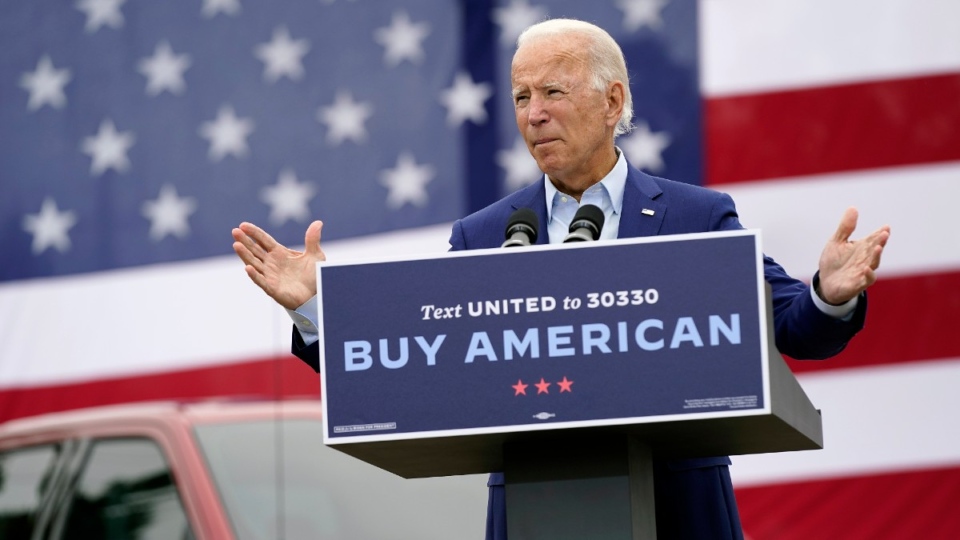On January 25th, newly-elected US President Joe Biden signed a new “Buy American” executive order which seeks to impose stricter rules on US federal government procurement contracts. Biden’s goal with the policy is to ensure that the $600-billion of annual federal procurement spending goes to made-in-America products. It is an effort to support domestic US firms and workers on the road to recovery from the COVID-19 pandemic. The plan centres around domestic production of medicine, hospital equipment and protective equipment.
America is no stranger to protectionist procurement policies. The 1933 Buy American Act (BAA) was born out of the Great Depression and sought to create US jobs by imposing restrictions on how federal purchases were made. This led to controversy in 2009 when the stimulus package introduced by the Obama administration required materials for its infrastructure program. A debate ensued over whether the BAA’s restrictions would hinder or spur recovery from the 2008 recession. More recently, President Trump came under fire over his protectionist trade policies including his own “Buy American, Hire American” executive order signed in 2017.
Interestingly, during the 2020 presidential campaign, Biden criticized Trump for not going far enough on the domestic production front, saying “America can’t sit on the sidelines in the race to the future. Our competitors aren’t waiting.” From Trump’s successful presidential campaign in 2016, it appears that promises to keep jobs in America win votes.
Joe Biden’s plan seeks to do more than Trump’s by publicizing requests from companies seeking exemptions from the Buy American provision and by having these requests overseen by government officials who will have federal agencies seek domestic suppliers. Government agencies will also be made to seek out small American firms to fill gaps in their procurement plans.
Proponents on both sides of the aisle claim that keeping federal spending in the US will do the trick to spur much-needed job growth within the US while also boosting innovation and wages.
As Joe Biden begins his presidency, it appears that the Buy American debate has been reignited along similar lines to 2009. Proponents on both sides of the aisle claim that keeping federal spending in the US will do the trick to spur much-needed job growth within the US while also boosting innovation and wages.
On the other side, however, Biden’s executive order has come under criticism for being counterproductive in the long run. First, there is no economic or historical evidence to suggest that protectionism can be a source for innovation. There is also a potential risk for a knock-on effect from changes to government procurement that will harm long term production. This is because supply chains for American firms often depend on foreign components. If companies are barred from buying foreign goods, costs of domestic production may rise. This would then stifle businesses’ profitability, therefore hindering potential for innovation or wage growth.
This is because made-in-America goods and services often cost more than internationally produced ones, rendering government procurement plans more costly than if there was no Buy American provision.
On top of this, Biden’s Buy American program can be criticized for being cost-ineffective. A study from the Peterson Institute of International Economics found that in 2017, the US government spent $94-billion more than it needed to on procurement. This is because made-in-America goods and services often cost more than internationally produced ones, rendering government procurement plans more costly than if there was no Buy American provision.
Much will depend on how far Biden’s executive order goes. The US is subject to the World Trade Organization’s (WTO) Agreement on Government Procurement (GPA) which limits the abilities of member countries to put protectionist measures on their government contracts. Trump was heavily criticized by trading partners in early 2020 for considering withdrawing from the GPA since many American companies rely heavily on the $1.7-trillion global procurement market. Now Biden says he wants to “modernize” such international trade rules. If Biden wants to go further than Trump on federal procurement, he may also run into conflict and criticism with regards to the GPA.
Biden’s economic plan has many parts, with most focusing on a recovery from the COVID-19 recession. To his credit, many aspects of his plan are effective routes to economic recovery, such as his $1.3-trillion infrastructure spending plan. Coming off the heels of the notoriously protectionist Trump administration, further protectionism may not be the answer to economic recuperation and growth in 2021. Additionally, if Joe Biden wants to position himself as the world leader who will restore faith in international liberal organizations in the post-Trump era, it does not make sense for him to run into clashes with the WTO and US trading partners. In an increasingly globalized world, a sustainable economic recovery from COVID-19 should include collaboration and trade between nations rather than reverting to the economically nationalist policies of the previous administration.








